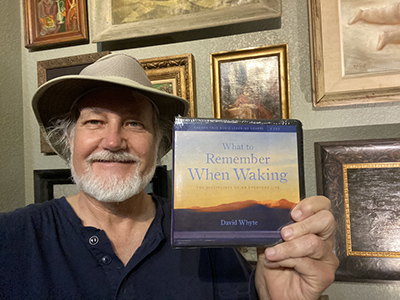Two weeks ago, one of my clients asked me to explain our marketing strategy to a guy from a private equity firm that is hoping to buy a chunk of my client’s company for a few hundred million dollars.
When we were retained 7 years ago, the company was bringing in barely $9m a year. Using radio as our primary driver of new business, we did nearly $250m in 2020 and are tracking to surpass $300m in 2021.
So far, so good, right?
The private equity guy suggested that we should redirect our radio budget to online advertising because, “no one listens to the radio anymore.”
I said, “You’re a numbers guy, right?”
“You could say that.”
“Have you ever heard of the Gallup Poll?”
“Of course,” he said.
“Are you familiar with the math that determines the sample sizes required for statistical accuracy?”
“Only the little bit that I was taught in college.”
“So you understand the margin of error depends inversely on the square root of the sample size. The smaller the universe of people, the larger the percentage of that universe must be queried to achieve statistical accuracy. If you want to measure the opinions of 10 people, you have to ask all 10 of them. You can’t ask just 5 and then extrapolate.”
His noncommittal grunt made it obvious that he knew none of this, so I continued. “But the larger the universe, the smaller the percentage you have to poll. You have to query 250 persons to measure a universe of just 700 people with a 3 percent margin of error, but a sample size of only 384 persons will measure the opinions of one million people with that same degree of accuracy.”
Another noncommittal grunt. I continued, “When they want to get blisteringly accurate, The Gallup Poll will have 1,500 persons in final tabulation, but they typically use just 1,004 respondents to measure the entire population of the Unites States. Nielsen, on the other hand, polls 1,011 persons per day just to measure the radio audience in Charlotte, North Carolina. Dallas, Denver, Tampa and Phoenix each receive sample sizes of 1,200 per day, and Nielsen samples 4,494 New Yorkers per day just to measure the city of New York.”
And then I dropped the technology on him. “Nielsen respondents carry an electronic device called a portable people meter that detects an electronic watermark identifying the radio station a person is listening to. These electronic devices don’t lie. They tell us exactly how many people are listening, and when.”
But the P.E. guy didn’t give up. He said, “The online budget rises and falls seasonally with the sales volume of the business, but the radio budget remains the same every month. How do you account for that?”
Fortunately, my client has an in-house employee who manages the online budget and she was on the phone with us.
I said, “The objective of a radio campaign is to become the name the listener thinks of immediately and feels the best about whenever they need what we sell. Today’s ads aren’t meant to sell customers today. Today’s ads are just one more tap of the hammer as we drive our message into their minds. We want to achieve automatic, involuntary recall. Scientists call it ‘procedural memory.'”
That’s when I asked the digital manager, “Do you agree that Google is the new phone book?”
“Yes, absolutely.”
“How many search strings account for most of the clicks that send people to our website?”
“Just 10 search strings are responsible for most of our clicks.”
“And how many of those search strings include the name of our company?”
“The top 9,” she said.
“So the radio ads are selling the customers, then they go to our website to retrieve our contact information?”
“Exactly.”
“Search string number 10 – the one that doesn’t include the name of our company – what percentage of our clicks does it get?”
“About 5 percent.”
“So without the name recognition and goodwill built through radio, we would have done only 12-and-a-half million dollars last year instead of 250 million dollars. Is that what I hear you saying?”
“Yes.”
And then I wrapped up my conversation with the private equity guy by saying, “Roughly 50 percent of America spends enough time listening to the radio each week that you can easily reach them with sufficient repetition to become a household word. The other half listens rarely, if ever. But it’s amazing how much you can sell to half the population of America.”
